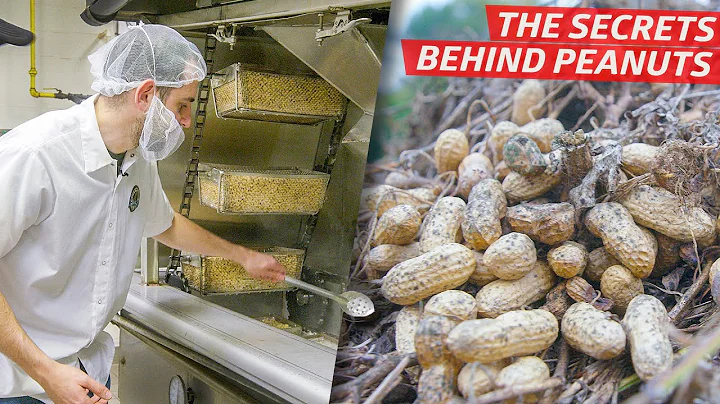Securely Install Your Gun Safe on Any Flooring - Tips and Tricks
Table of Contents
- Introduction
- Why Anchoring a Gun Safe is Important
- Types of Flooring and Subflooring
- Plywood Subflooring
- Concrete Subflooring
- Wood Subflooring
- Anchoring a Gun Safe on Different Flooring Types
- Hardwood Floors
- Carpeting
- Vinyl, Linoleum, and Laminate Flooring
- Tile and Stone Flooring
- Safe Anchoring Process
- Anchoring on Hardwood Floors
- Anchoring on Carpeting
- Anchoring on Vinyl, Linoleum, or Laminate Flooring
- Anchoring on Tile or Stone Flooring
- Additional Considerations
- Post-Tension Floors and Safety Precautions
- Alternative Anchoring Methods
- Conclusion
Anchoring a Gun Safe: Keeping Your Valuables Safe and Secure
Gun safes are an essential investment for firearm owners as they provide a secure storage solution. However, simply owning a safe is not enough; proper anchoring is crucial to ensure maximum safety and security. In this article, we will explore the importance of anchoring a gun safe, the different types of flooring and subflooring, and the step-by-step process of anchoring a safe on various types of floors.
Why Anchoring a Gun Safe is Important
Anchoring down a gun safe is vital to prevent thieves from easily tipping it over and attempting to pry it open. By installing bolts and anchors, you add an extra layer of security to your safe. It is essential to understand that how a safe is anchored depends on the type of flooring and subflooring it will be placed on.
Types of Flooring and Subflooring
Plywood Subflooring
In homes with basements or crawlspaces, the main level usually has plywood subflooring with joists underneath for support. Anchoring a gun safe on this type of flooring requires wood anchors.
Concrete Subflooring
If your gun safe will be placed in a basement or an area without a plywood subfloor, such as a garage or concrete foundation, you will need concrete anchors. It is crucial to ensure that your concrete floor is not a post-tension type before drilling holes for anchoring.
Wood Subflooring
For homes with hardwood, carpeting, vinyl, linoleum, or laminate flooring installed on top of a wood subfloor, a safe-anchoring kit for wooden subfloors is necessary.
Anchoring a Gun Safe on Different Flooring Types
Hardwood Floors
Anchoring a gun safe on hardwood floors requires using a safe-anchoring kit specifically designed for wooden subfloors. The kit typically includes pre-cut anchoring holes in the safe's floor, which can be accessed by removing the floor panel and caps. By drilling holes in the hardwood floor at the designated locations and securing the bolts with washers, the safe can be properly anchored.
Carpeting
When anchoring a gun safe on carpeting, the same process as for hardwood floors can be followed. However, it is important to ensure that the bolts are securely fastened into the underlying wooden subfloor for added stability.
Vinyl, Linoleum, and Laminate Flooring
Similar to hardwood and carpeting, anchoring a gun safe on vinyl, linoleum, or laminate flooring requires a safe-anchoring kit for wooden subfloors. The installation process involves accessing the pre-cut anchoring holes, drilling holes in the subfloor, and securing the bolts using washers.
Tile and Stone Flooring
Anchoring a gun safe directly to tile or stone flooring is not recommended due to the risk of cracking the tiles. If you prefer to place your safe on tile or stone, it is advisable to consult with a professional installer to explore alternative anchoring options, such as anchoring the safe to the wall.
Safe Anchoring Process
Anchoring on Hardwood Floors
- Remove the safe's floor panel and caps to access the pre-cut anchoring holes.
- Drill holes in the hardwood floor at each of the four anchoring locations.
- Place washers on the anchor bolts included in the safe-anchoring kit.
- Use a socket set to secure the bolts in the drilled holes.
- Replace the floor caps and panel.
Anchoring on Carpeting
- Follow the same steps as for anchoring on hardwood floors.
- Ensure that the bolts are securely fastened into the underlying wooden subfloor.
Anchoring on Vinyl, Linoleum, or Laminate Flooring
- Use a safe-anchoring kit for wooden subfloors, featuring pre-cut anchoring holes.
- Drill holes in the wooden subfloor at the designated locations.
- Secure the bolts with washers using a socket set.
- Replace the floor caps and panel.
Anchoring on Tile or Stone Flooring
Anchoring a safe on tile or stone flooring is not recommended due to the risk of cracking. Consult with a professional installer to explore alternative safe anchoring methods that do not involve drilling through the floor.
Additional Considerations
Post-Tension Floors and Safety Precautions
It is crucial to determine if your concrete floor is a post-tension type before attempting to drill holes for anchoring. Post-tension floors have strong steel cables running through them, and damaging a cable can lead to severe hazards. If unsure, consult with the contractor who built your home.
Alternative Anchoring Methods
In cases where anchoring a gun safe directly to the floor is not feasible or recommended, alternative methods can be explored. Consulting with a professional safe installer can help determine the best course of action to secure the safe without compromising the flooring.
Pros:
- Anchoring enhances the security of gun safes by preventing them from being easily tipped over.
- Proper anchoring ensures that thieves cannot pry open the safe as easily.
Cons:
- Anchoring a safe on certain flooring types, such as tile or stone, can be challenging and may require alternative methods.
- Anchoring incorrectly or without proper knowledge can result in damage to the flooring or the safe itself.
Conclusion
Anchoring a gun safe is an important step to ensure the safety and security of your firearms and valuables. By understanding the different types of flooring, subflooring, and the proper anchoring methods, you can successfully secure your safe. Prioritize safety by consulting with professionals if you are unsure about the anchoring process or faced with challenging flooring types.
Highlights
- Proper anchoring enhances the security of gun safes by preventing them from being easily tipped over or pried open.
- Different types of flooring require specific anchoring methods, such as wood anchors for plywood subfloors and concrete anchors for basements or garage floors.
- Tile and stone flooring may require alternative anchoring methods to prevent cracking.
- It is important to verify if your concrete floor is a post-tension type before drilling holes for anchoring.
- Consulting with professionals is recommended for safe anchoring on challenging flooring types.
FAQs
Q: What is the purpose of anchoring a gun safe?
A: Anchoring a gun safe prevents it from being easily tipped over and helps deter thieves from prying it open.
Q: Can I anchor a gun safe on tile or stone flooring?
A: Anchoring a safe directly to tile or stone flooring is not recommended due to the risk of cracking. Alternative anchoring methods or anchoring to the wall should be explored.
Q: Should I consult a professional to anchor my gun safe?
A: While it is possible to anchor a gun safe on your own, consulting a professional is recommended to ensure proper installation and minimize the risk of damage to the flooring and the safe.
Q: Are there any safety precautions to consider when anchoring a safe?
A: If drilling into a concrete floor, it is important to determine if it is a post-tension type. Damaging a post-tension cable can be hazardous and may result in property damage or injury.
Q: What are the alternatives to floor anchoring for gun safes?
A: If anchoring to the floor is not feasible, alternative methods such as wall anchoring or professional bolt-down systems can be considered.
Resources







